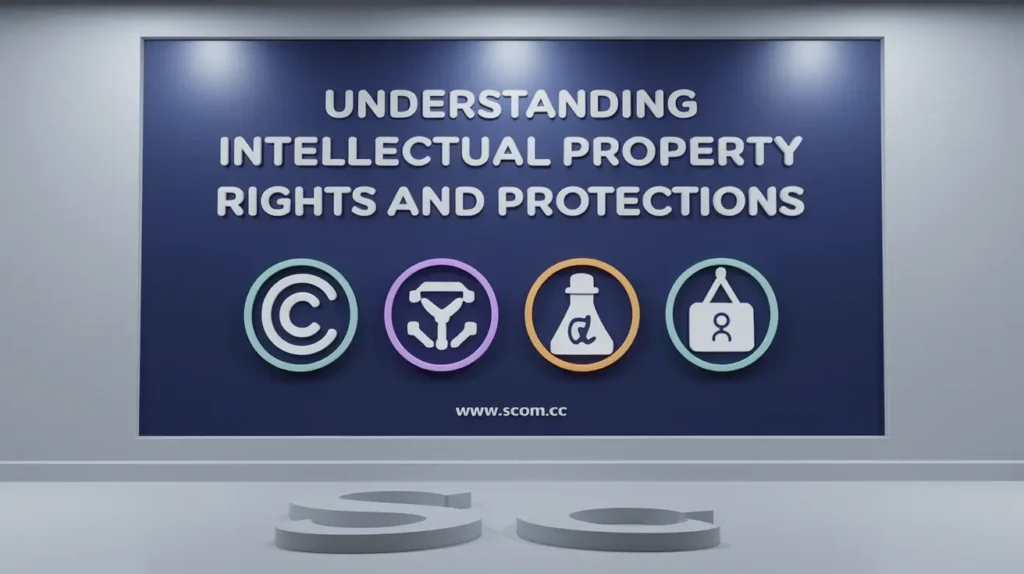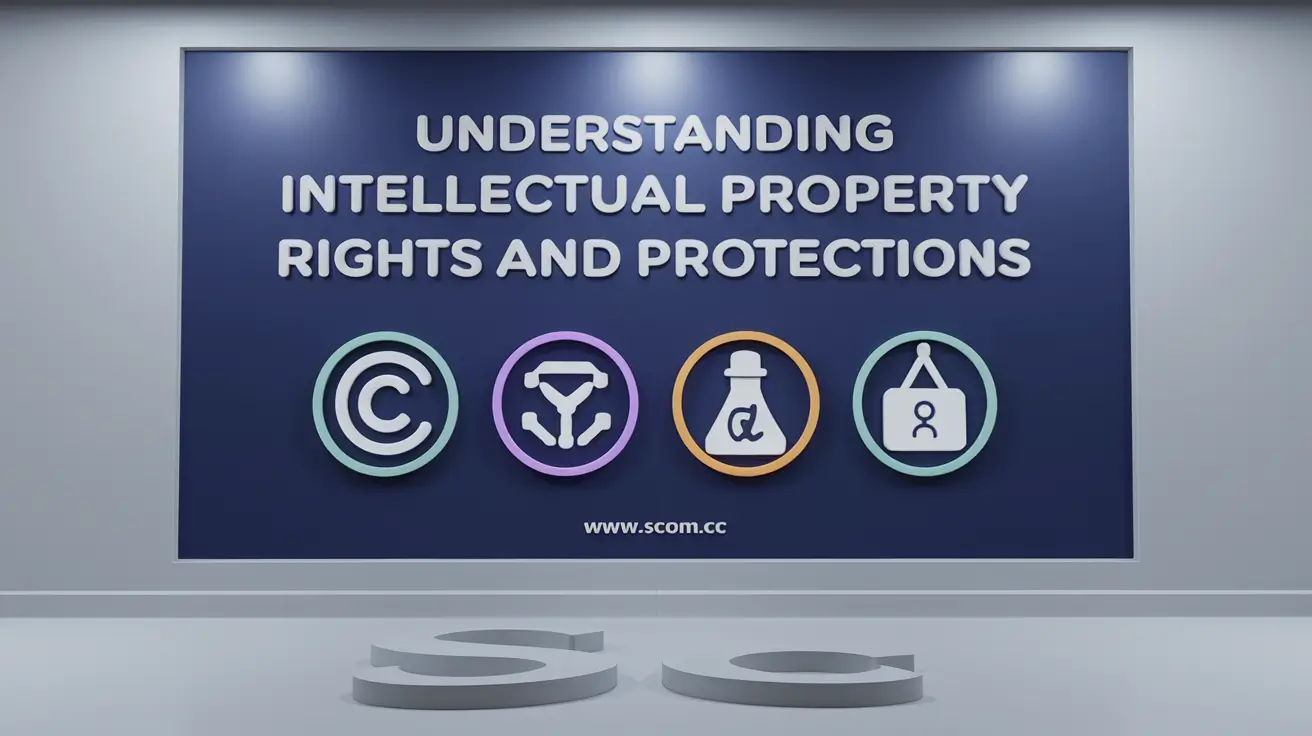Understanding Intellectual Property Rights and Protections

- Understanding Intellectual Property Rights and Protections
- What is Intellectual Property?
- The Importance of Intellectual Property Rights
- Understanding Patents
- Understanding Copyrights
- Understanding Trademarks
- Understanding Trade Secrets
- Enforcing Intellectual Property Rights
- International Intellectual Property Protections
- Challenges and Considerations in IP Protection
- Future Trends in Intellectual Property
-
FAQ
- What is Intellectual Property (IP)?
- What are the different types of Intellectual Property rights?
- How can I obtain a patent for my invention?
- What is the difference between copyright and trademark protection?
- How can I protect trade secrets within my business?
- What steps should I take to enforce my IP rights?
- How do international agreements affect IP protection?
- What are some challenges in managing Intellectual Property?
- What future trends are influencing Intellectual Property?
- How can businesses adapt to evolving IP trends?
Understanding Intellectual Property Rights and Protections
Intellectual Property (IP) rights are crucial for safeguarding the innovations, creations, and brands of individuals and businesses. They provide legal protections that foster creativity, encourage investment in new ideas, and ensure that creators can benefit from their work. This article explores the various types of intellectual property rights, their importance, and how they can be protected.
What is Intellectual Property?
Intellectual Property (IP) refers to creations of the mind, such as inventions, literary and artistic works, designs, symbols, names, and images used in commerce. IP rights give creators exclusive rights to use and control their creations, preventing others from using them without permission.
Types of Intellectual Property
- Patents: Protect inventions and technological innovations.
- Copyrights: Safeguard literary and artistic works.
- Trademarks: Guard brands, logos, and symbols used in trade.
- Trade Secrets: Protect confidential business information and processes.
Understanding these types of IP is fundamental for creators and businesses to ensure their innovations and creations are legally protected.
The Importance of Intellectual Property Rights
Intellectual Property Rights (IPR) play a critical role in promoting innovation, protecting brand identity, and supporting economic growth. They provide legal mechanisms for creators to safeguard their work and earn revenue from their creations.
Benefits of Intellectual Property Rights
- Encourages Innovation: By providing exclusive rights, IP protection incentivizes individuals and companies to invest in new ideas and technologies.
- Protects Brand Identity: Trademarks and copyrights help maintain brand integrity and prevent unauthorized use.
- Generates Revenue: IP rights allow creators to monetize their work through licensing, sales, and royalties.
- Promotes Economic Growth: A robust IP system supports economic development by fostering competition and investment.
IP rights are essential for fostering a culture of innovation and ensuring that creators and businesses can reap the rewards of their efforts.
Understanding Patents
Patents protect inventions and technological innovations by granting exclusive rights to the inventor. There are three main types of patents: utility patents, design patents, and plant patents.
Types of Patents
- Utility Patents: Protect new and useful processes, machines, or compositions of matter.
- Design Patents: Safeguard new, original, and ornamental designs for an article of manufacture.
- Plant Patents: Cover new and distinct plant varieties.
How to Obtain a Patent
- Determine Patentability: Ensure that the invention is novel, non-obvious, and useful.
- Prepare a Patent Application: Draft a detailed description and claims of the invention.
- File the Application: Submit the application to the relevant patent office.
- Examination Process: The patent office examines the application and may require revisions.
- Grant of Patent: Once approved, the patent is granted, providing exclusive rights to the inventor.
Understanding the patent process helps inventors protect their innovations and prevent unauthorized use.
Understanding Copyrights
Copyrights protect original works of authorship, including literary, artistic, musical, and other creative works. Copyright provides the creator with exclusive rights to reproduce, distribute, and display their work.
What Copyright Protects
- Literary Works: Books, articles, and written content.
- Artistic Works: Paintings, sculptures, and photographs.
- Musical Works: Songs, compositions, and lyrics.
- Dramatic Works: Plays, scripts, and choreography.
How to Obtain Copyright Protection
- Automatic Protection: Copyright protection is automatic upon the creation of the work, without the need for registration.
- Registration: While not required, registering the work with the copyright office provides additional legal benefits, such as the ability to sue for statutory damages and attorney’s fees.
Understanding copyright helps creators protect their works and ensure they receive proper credit and compensation.
Understanding Trademarks
Trademarks protect symbols, names, logos, and other identifiers used in commerce to distinguish products or services. They help consumers identify and trust brands.
Types of Trademarks
- Word Marks: Protect brand names and words.
- Design Marks: Safeguard logos, symbols, and designs.
- Combined Marks: Protect combinations of words and designs.
How to Register a Trademark
- Search for Existing Trademarks: Ensure that the trademark is not already in use.
- Prepare a Trademark Application: Provide a description of the mark and its use.
- File the Application: Submit the application to the trademark office.
- Examination Process: The trademark office reviews the application and may request revisions.
- Grant of Trademark: Once approved, the trademark is registered, providing exclusive rights to the owner.
Understanding trademarks is essential for protecting brand identity and maintaining a competitive edge in the market.
Understanding Trade Secrets
Trade secrets are confidential business information and processes that provide a competitive advantage. They can include formulas, practices, designs, and business strategies.
What Trade Secrets Include
- Formulas and Recipes: Secret ingredients or manufacturing processes.
- Business Strategies: Marketing plans, pricing strategies, and customer lists.
- Technical Data: Research and development information.
How to Protect Trade Secrets
- Confidentiality Agreements: Use non-disclosure agreements (NDAs) with employees and business partners.
- Security Measures: Implement physical and digital security measures to protect confidential information.
- Limited Access: Restrict access to trade secrets to authorized personnel only.
Understanding trade secrets helps businesses safeguard their competitive advantage and maintain confidentiality.
Enforcing Intellectual Property Rights
Enforcing IP rights involves taking legal action to prevent unauthorized use and infringement. This process can vary depending on the type of IP and the nature of the infringement.
Steps for Enforcing IP Rights
- Identify Infringement: Determine if an infringement has occurred and gather evidence.
- Send a Cease and Desist Letter: Notify the infringer of the violation and request that they stop the infringing activity.
- File a Lawsuit: If necessary, file a legal action to seek damages and enforce IP rights.
- Seek Resolution: Explore settlement options, mediation, or arbitration to resolve the dispute.
Enforcing IP rights is crucial for protecting creations and ensuring that IP owners can benefit from their work.
International Intellectual Property Protections
Intellectual property protections can extend beyond national borders through international agreements and treaties. These agreements help harmonize IP laws and facilitate cross-border enforcement.
Key International Agreements
- Paris Convention for the Protection of Industrial Property: Covers patents and trademarks.
- Berne Convention for the Protection of Literary and Artistic Works: Protects copyrights.
- TRIPS Agreement (Trade-Related Aspects of Intellectual Property Rights): Sets minimum standards for IP protection and enforcement.
How to Obtain International Protection
- File International Applications: Use treaties and agreements to file applications in multiple countries.
- Seek Local Advice: Consult with local IP attorneys to navigate specific national requirements and regulations.
Understanding international IP protections helps businesses expand globally and safeguard their IP across different jurisdictions.
Challenges and Considerations in IP Protection
IP protection involves various challenges and considerations, including managing enforcement, addressing infringement, and navigating complex legal systems.
Common Challenges
- Infringement: Identifying and addressing unauthorized use of IP.
- Global Enforcement: Enforcing IP rights in different jurisdictions and legal systems.
- Costs: Managing the costs associated with obtaining and enforcing IP protection.
Considerations for Effective IP Management
- Regular Monitoring: Continuously monitor for potential infringements and enforcement opportunities.
- Strategic Planning: Develop a comprehensive IP strategy that aligns with business goals and market expansion plans.
- Legal Support: Seek advice from IP attorneys and experts to navigate complex legal issues and ensure effective protection.
Addressing these challenges and considerations helps ensure robust IP protection and effective management of intellectual property assets.
Future Trends in Intellectual Property
The landscape of intellectual property is constantly evolving, with emerging trends shaping the future of IP protection and enforcement.
Key Trends
- Digital Transformation: The rise of digital technologies and online platforms impacts IP protection and enforcement, requiring new approaches to address digital infringement.
- Artificial Intelligence (AI): AI technologies present new opportunities and challenges for IP, including questions about ownership and inventorship.
- Globalization: Increased global business activities require enhanced international IP protections and harmonization of laws.
Adapting to Trends
- Stay Informed: Keep up-to-date with emerging trends and changes in IP law.
- Innovate and Adapt: Develop strategies to address new challenges and leverage opportunities in the evolving IP landscape.
Understanding and adapting to future trends helps businesses stay ahead in protecting their intellectual property and navigating the evolving IP environment.
FAQ
What is Intellectual Property (IP)?
Intellectual Property (IP) refers to creations of the mind, including inventions, literary and artistic works, designs, and symbols, which are protected by law.
What are the different types of Intellectual Property rights?
The main types of Intellectual Property rights are patents, copyrights, trademarks, and trade secrets.
How can I obtain a patent for my invention?
To obtain a patent, you must determine patentability, prepare and file a patent application, and undergo an examination process with the relevant patent office.
What is the difference between copyright and trademark protection?
Copyright protects original works of authorship, such as books and music, while trademarks protect symbols, names, and logos used in commerce to identify products or services.
How can I protect trade secrets within my business?
Protect trade secrets by using confidentiality agreements, implementing security measures, and restricting access to confidential information.
What steps should I take to enforce my IP rights?
To enforce IP rights, identify infringement, send a cease and desist letter, and if necessary, file a lawsuit or seek resolution through settlement, mediation, or arbitration.
How do international agreements affect IP protection?
International agreements harmonize IP laws across countries, allowing for broader protection and easier enforcement of IP rights in multiple jurisdictions.
What are some challenges in managing Intellectual Property?
Challenges in IP management include dealing with infringement, enforcing rights globally, and managing associated costs.
What future trends are influencing Intellectual Property?
Future trends in IP include digital transformation, advancements in artificial intelligence, and increased globalization affecting IP protection and enforcement.
How can businesses adapt to evolving IP trends?
Businesses can adapt by staying informed about trends, innovating to address new challenges, and developing strategies to navigate the evolving IP landscape.

If you enjoyed this article and found it valuable, we encourage you to explore our news and valuable information section, where you'll find more relevant and up-to-date content that may pique your interest. Additionally, if you are seeking advice or need guidance on a specific topic, we suggest visiting our services section. There, you will find a variety of options designed to assist and support you in addressing your needs. Feel free to check out both sections to get the information and assistance that best suits your requirements.

Leave a Reply